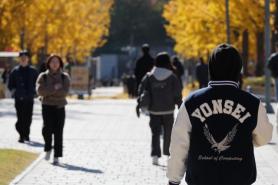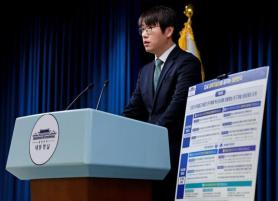
Kim Yong-ha, Professor at Soonchunhyang University
South Korea is confronting a demographic reckoning unlike anything in its modern history. The country’s fertility rate fell to a record low of 0.75 in 2024 — the lowest in the world — and its working-age population has been shrinking since 2020.
By next year, older adults will make up more than 20 percent of the population, a figure expected to reach 34.4 percent by 2040. These shifts threaten to upend the foundations of the nation’s economic growth, strain its welfare budget and hollow out regions already struggling to remain viable.
At the same time, a revolution in artificial intelligence and robotics is sweeping through factories, hospitals, logistics centers and even white-collar workplaces. Machines are increasingly capable not only of performing routine physical labor but also of taking on cognitive tasks once thought resistant to automation. That convergence — a shrinking workforce and a rapidly expanding AI tool kit — presents South Korea with a stark choice: shape these forces into a coherent national strategy, or be overtaken by them.
For too long, population policy has been synonymous with efforts to raise the birthrate. But no realistic scenario suggests that births alone can reverse the demographic decline. What South Korea needs instead is an integrated plan that pairs technological innovation with regional and industrial policy — a strategy for functioning, and even thriving, with fewer people.
In the short term, that means deploying robots in the places that need them most: rural counties losing young adults, industrial towns struggling to fill shifts, and communities where aging residents outnumber the working-age population. In the long term, AI and robotics must be embedded into broader plans for industrial restructuring and regional revitalization.
Some of this transformation is already underway. Care robots can help older adults live independently. Collaborative robots — or “cobots” — can amplify productivity in factories and farms. Domestic and childcare robots can ease the burdens that make family life more difficult, improving quality of life even if they do not raise birthrates. AI tools can extend the reach of doctors and nurses in underserved regions, narrowing healthcare gaps that widen as populations shrink.
But technology alone is not enough. The government must identify which jobs are most suitable for automation, and where robotization can address the most acute labor shortages. That requires careful evaluation by industry and job type, followed by targeted investment in AI robotics and support for research and development. Building regional clusters for robot production and maintenance would not only create new industrial hubs but also anchor local economies facing population loss.
Legal and institutional frameworks will need to evolve as well. As human-robot collaboration becomes commonplace, labor laws, safety standards and liability rules must keep pace. Social safety nets will have to be strengthened to soften the impact on workers displaced by automation and to provide pathways for retraining.
If South Korea approaches this moment with vision, the rise of AI robotics can be more than a defensive measure. It can become the catalyst for redesigning the nation’s labor system — one that integrates technology, employment, education and ethics into a model of sustainable growth.
Government investment in AI should therefore extend beyond headline-grabbing research projects and focus on robots that fill critical gaps in caregiving, domestic work, agriculture and logistics. Coordinated funding for deployment and training, in partnership with local governments, industry and universities, can position South Korea not only to cope with demographic decline but also to lead in the global robotics economy.
About the author
-Ph.D. in Economics, Sungkyunkwan University
-Professor, Soonchunhyang University
-Former President, Korea Institute for Health and Social Affairs
-Former President, Korea Economic Research Association
-Former President, Korea Fiscal Policy Association
* This article, published by Aju Business Daily, was translated by AI and edited by AJP.
Copyright ⓒ Aju Press All rights reserved.



